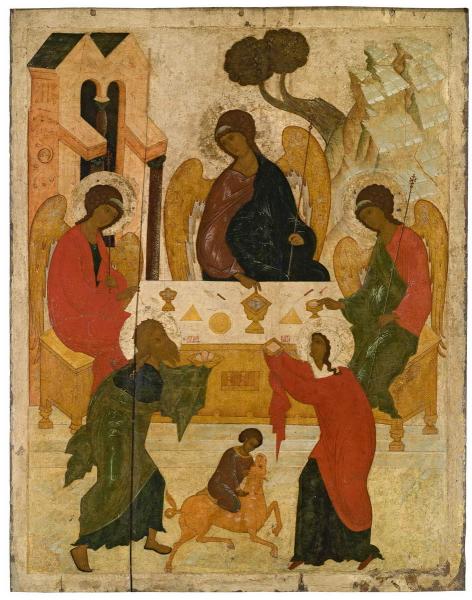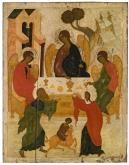The Old Testament Trinity
Novgorod. Mid-16th century
- Period Old Russian Art
- CategoryBiblical Subject
- Share
Christian theology interprets the meal of the three angels and the hospitality of Abraham as a prototype of the Last Supper and the establishment of the sacrament of the Eucharist. The episode is also regarded as proof of the Triune God. The positions of the angels on the icon, from left to right, follow the order of the Confession of Faith: «I believe in God the Father, the Son and the Holy Ghost.” The crossed halo above the central figure indicates Jesus Christ. The biblical narrative illustrated on the background of the icon is also filled with Christian symbolism. The edifices shading God the Father represent His wisdom and divine house-building. The oak above the head of Christ is also the Tree of Life and a symbol of His Resurrection. The hill above the Holy Ghost symbolises the transport of the spirit. The entire re presentation is subordinated to the circular composition, in correspondence with the theological essence of the Trinity, which has no beginning and no end. The composition also recalls the circular nature of the liturgical calendar, reiterated by the colour harmony of the icon, which forms a circular colour spectrum. The regulated composition, faithful drawing, symmetrical alternation of different paints, abundance of smooth round lines and the elevated and decorative flair of the rhythmic forms and colours lend the work an expressive and festive air. These artistic devices reflect the traditions of Novgorod icon-painting. Russian Museum: From Icons to the Modern Times. Palace Editions, St Petersburg, 2015. P. 52.

